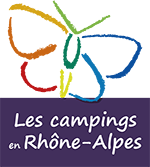With eight nature parks including two national parks, Rhône-Alpes offers endless possibilities for days out, exploring and recharging your batteries. And when you're camping you can stay closer to nature in the unspoilt countryside.
The Vanoise National Park is home to a colony of 2,500 ibex, making it the largest ibex reserve in the French Alps. The Park contains amazing old villages such a Bonneval sur Arc and the mountain hamlet of L’Ecot.
The Vanoise National Park is home to a colony of 2,500 ibex, making it the largest ibex reserve in the French Alps. The Park contains amazing old villages such a Bonneval sur Arc and the mountain hamlet of L’Ecot.
At 91,800 hectares, the Ecrins National Park is the largest of France's national parks. It contains 17,000 hectares of glaciers and a collection of summits rising to close to or over 4,000 metres (13,000 ft).
The Haut Jura Regional Park covers 1,455 km2 of the Jura Mountains at the gateway to Switzerland and Lake Geneva. This wild countryside offers opportunities to spot chamois, lynx and capercaillie. The Chartreuse Regional Park, the greenest Park, earning it the nickname "the Emerald of the Alps", is the smallest of the pre-Alpine ranges. It is home to the Grande Chartreuse Monastery, which helps to give it something of a mystical feel.
The Bauges Regional Park is an island of untouched countryside at moderate altitude (270 m to 2,200 m) situated between Chambéry, Annecy and Albertville.
The Pilat Regional Park is also at moderate altitude, rising in steps from the Rhône Valley (140 m) to the Crêt de la Perdrix (1,432 m). These mountains contain a geological oddity, the chirats. This is the local name given to the expanses of fallen rock covering the steep slopes of the Pilat. They were formed in the Quaternary period are very rare; the only other examples are found in the Appalachian Mountains.
The Vercors Regional Park, which stretches between the Drôme and Isère at the gateway to Provence and the High Alps, is a natural limestone fortress. It is home to France's largest nature reserve, the Réserve des Hauts Plateaux du Vercors, which resembles the Arctic wastes when covered in snow in the winter.
The Monts d'Ardèche Regional Park, created in 2001 on the initiative of the region's chestnut growers, covers part of Rhône-Alpes' third mountainous region, the volcanoes of the Massif Central.
Rhône-Alpes' 2 national and 6 regional parks are naturally closely involved in the National Sustainable Development Charter, which undertakes to strike a careful balance between development and environmental protection in the mountains. A sustainable housing policy, respecting the architectural heritage, preserving the landscapes and countryside, balanced energy resource and water management, raising awareness among users: these are all measures that must be scrupulously implemented to comply with the Kyoto Protocol (1998). Looking after countryside as amazing as this is a serious business!




